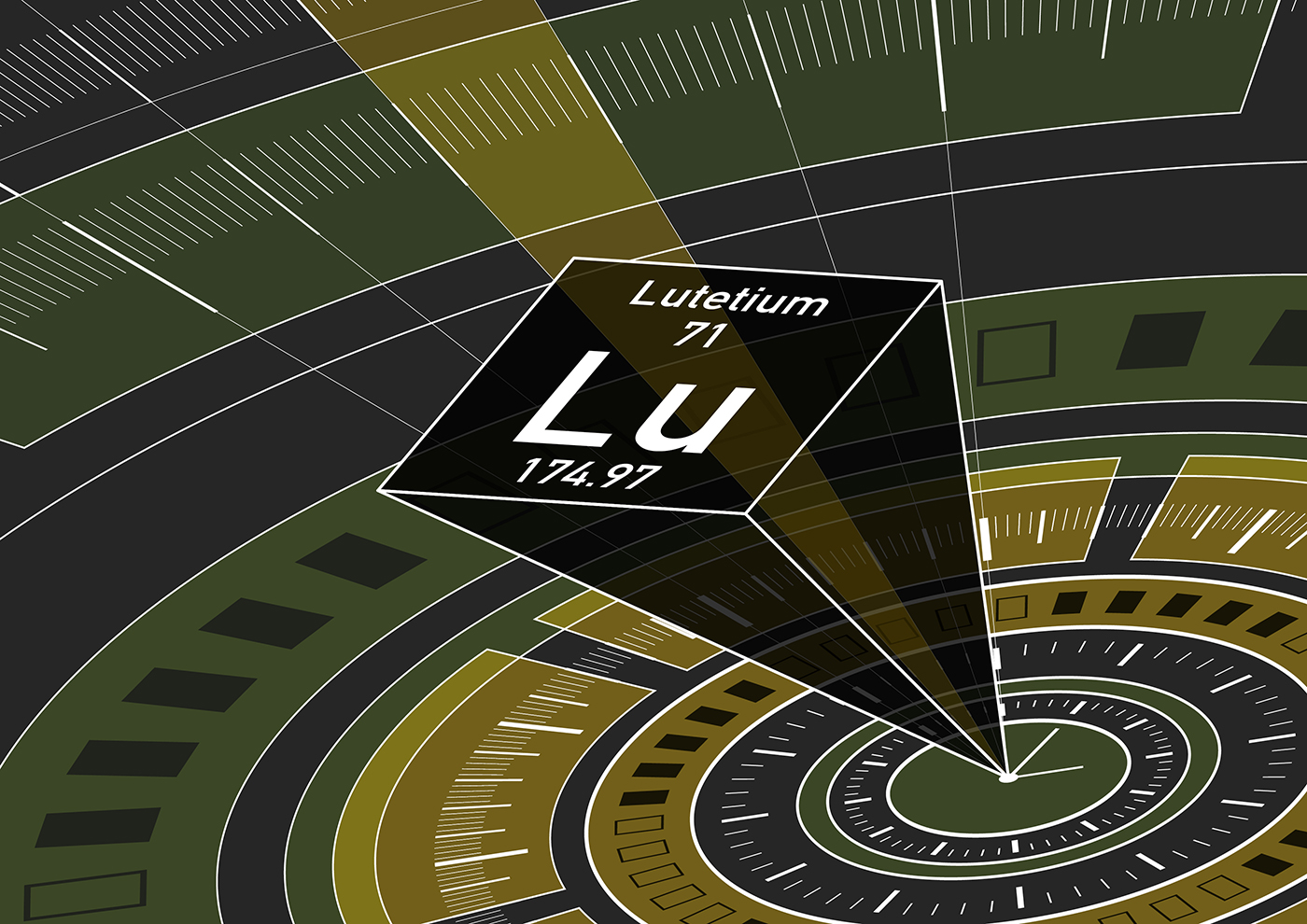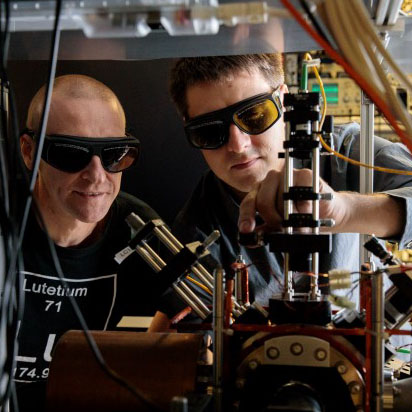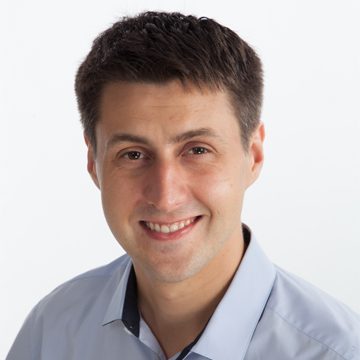Highlights
Lutetium clock a contender to redefine the second
 The current generation of atomic clocks can make extremely precise measurements of time, leading to an anticipated redefinition of the second. The lutetium clock built by Principal Investigator Murray Barrett’s group could be a contender. Image credit: Aki Honda
The current generation of atomic clocks can make extremely precise measurements of time, leading to an anticipated redefinition of the second. The lutetium clock built by Principal Investigator Murray Barrett’s group could be a contender. Image credit: Aki Honda
A timekeeping marvel is housed in CQT’s labs – a lutetium clock built by Principal Investigator Murray Barrett’s group. The group has long expected that lutetium’s properties mean it makes for a stable, ultra-precise clock. They confirm their expectations with results that are published in Science Advances on 3 May 2023.
“Over the years, we have developed methods and techniques for lutetium to measure and assess all the systematics we need to say this clock is as good as we said it would be,” says Murray.
Atomic clocks have set the global standard for measuring time. Time is measured by counting the oscillation of a light wave that transitions an atom between two energy levels. The frequency of this atomic transition is a fixed property of the atom. Since 1967, caesium’s atomic transition has been the frequency reference to define the second. To be precise, it is 9,192,631,770 Hz, or 9,192,631,770 ‘ticks’ per second.
The current generation of atomic clocks can slice time even more finely. They run at optical frequencies as compared to caesium clocks which run at microwave frequency. This makes for more precise measurements which will enable new applications in monitoring geopotential changes and tests of fundamental physics.
It has also led to an anticipated redefinition of the second. The General Conference on Weights and Measures, the intergovernmental organisation which sets measurement standards, is receiving proposals for the choice of the preferred atomic species in 2026. It expects to adopt steps for a new definition in 2030.
Murray holds a joint appointment with the Agency for Science, Technology and Research’s National Metrology Centre (NMC). His co-authors are CQT’s Zhang Zhiqiang, Kyle Arnold, also of Temasek Laboratories, and Rattakorn Kaewuam, who is also affiliated the National Institute of Metrology in Thailand. The national timekeeping organisations not only keep standard time for their countries, but will also have input to new time standards.
As the designated National Metrology Institute of Singapore, NMC is involved in developing, maintaining and disseminating the nation’s primary measurement standards. One of the key functions of NMC is to realise the SI Units. The anticipated redefinition of the SI second using optical frequency atomic clocks will improve the existing definition by around a hundredfold in accuracy, greatly benefiting positioning, navigation and timing (PNT) and time transfer applications. “The demonstrated performance of the lutetium clock in Singapore makes it one of the potential candidates for the redefinition of the second. The team at the NMC is working closely with CQT to assess the metrological performance for future potential inclusion in steering the Coordinated Universal Time (UTC) time scale”, says Dr Chua Sze Wey, Head of the Electromagnetics and Time Metrology cluster at NMC, which Murray is affiliated to.
Evaluating clock performance
The performance of an atomic clock ultimately boils down to the properties of the atom. In particular, the atom’s sensitivity to its environment, since you do not want a change in temperature, say, to change how fast time appears to tick.
In earlier work, Murray’s group had already shown that lutetium’s clock transition at 848 nm has favourable properties. They had measured a low blackbody radiation shift, −1.36 × 10−18 at 300 K, which results from temperature sensitivity. It also has the lowest sensitivity to magnetic field noise of any existing clock system.
To evaluate the performance of their clock, the researchers built two clocks and checked how closely they agreed over a period of time. When the clocks continue to ‘tick’ in sync, it shows they are stable.
Murray’s team used a technique called ‘correlation spectroscopy’ to look for this stability. They used a laser pulse to put two lutetium ions in two separate traps into a superposition. This makes the two ions start oscillating in phase. After some time, the researchers hit the two ions with a second laser pulse to learn whether the two ions are still in phase. The researchers thus compare the clocks by using one atom as a reference for the other.
A more traditional way to compare two clocks is laser spectroscopy, where each atom is probed with a different laser to compare their frequencies. The precision of this method then comes down to control of the laser frequency. “I think correlation spectroscopy is an important way to assess the atoms beyond our current laser technology,” says Murray. “From my perspective, I don't care about how good a clock I can build, it's how good a clock can my grandchildren build. And how good a clock my grandchildren can build, would be based on how good is that atom.”
The researchers report that the frequencies of the two lutetium clocks are the same within 9 × 10−19, a carefully evaluated uncertainty. This is the lowest reported in comparing independent optical references.
A second transition
Even with the low evaluated uncertainty, the group is not making any accuracy claims yet. One question remains to be answered. Will a lutetium clock built elsewhere be as good as their lutetium clock built in Singapore?
Currently, the Global Positioning System (GPS) satellites carry atomic clocks based on caesium. Receivers track signals from the satellites and enables comparison of clocks to Coordinated Universal Time. As the new generation of atomic clocks has surpassed the accuracy of caesium clocks, without a new standard, a comparison of accuracy between clocks is difficult.
One suggestion is for higher-accuracy clocks to be compared with each other, giving a frequency ratio. If the same ratio is measured with different clocks in different places, it can be supposed the clocks agree. Lutetium, uniquely, has two clock transitions within one atom. This means that researchers could use just one apparatus to measure a frequency ratio that can be compared to another lutetium clock built elsewhere.
Murray says, “I would go so far to as to say that if my life depends on 10−18 accuracy, I'm only going to believe lutetium and only if you can tell me what that frequency ratio is and only if it agrees with mine.”
Having used the transition at 848 nm for their current experiment, they now plan to map their techniques to the second clock transition at 804 nm to measure the frequency ratio.
Learn more
Related Stories
 | Neglected atom has top properties for atomic clocks May 10 2018 |
 | Meet a CQTian: Kyle Arnold December 16 2020 |






